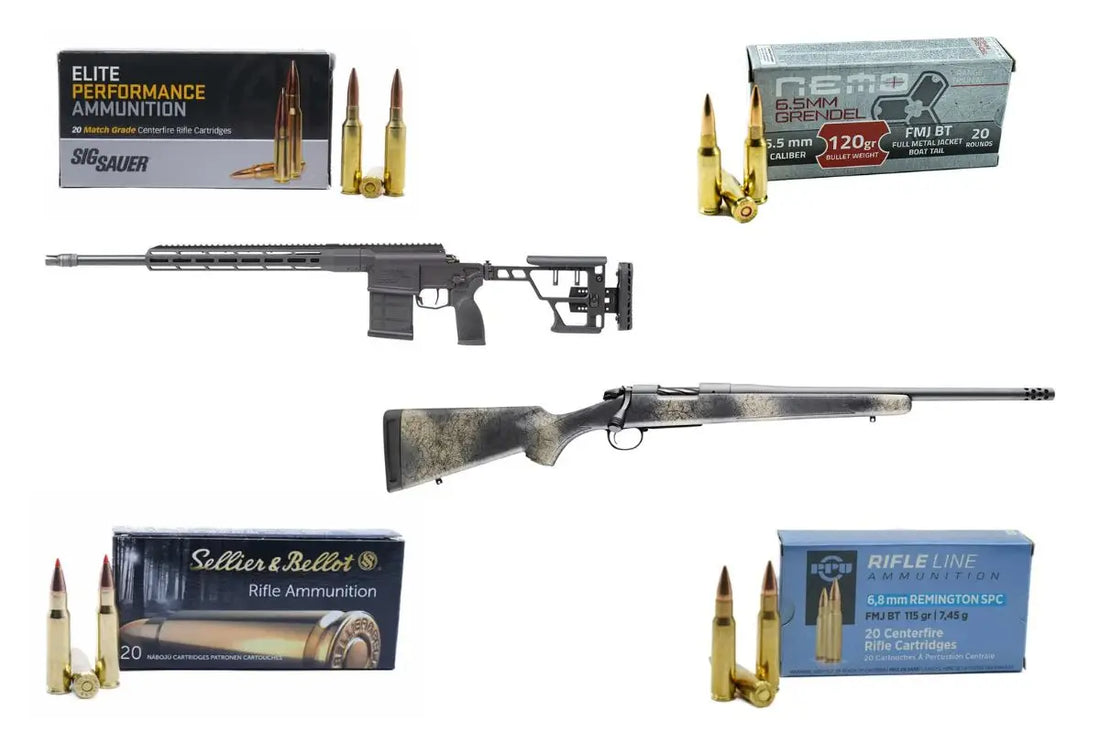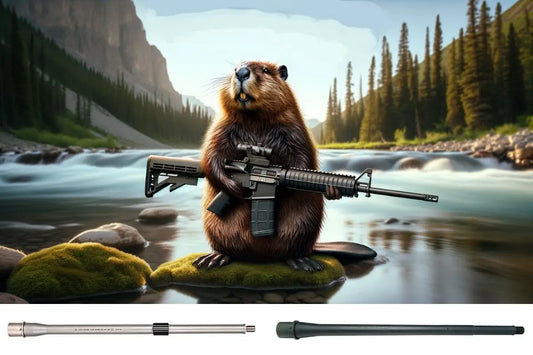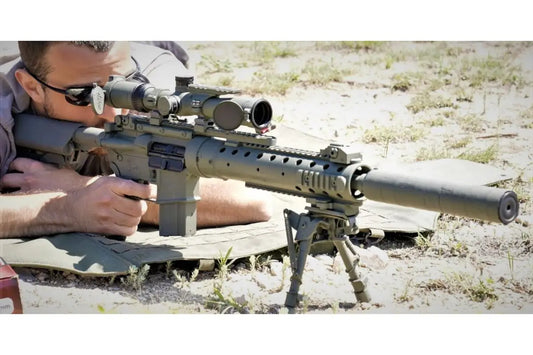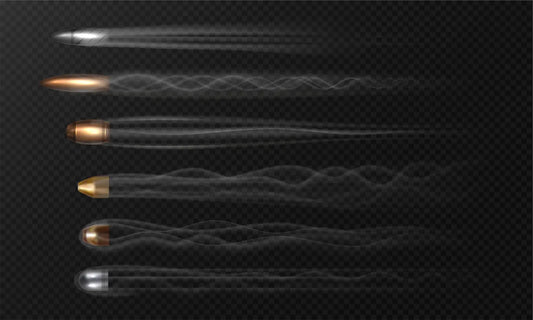
6.5mm Revolution Unveiled: Your Ultimate Guide to 6.5 Grendel, 6.5 Creedmoor & 6.8 SPC—Ballistics, Applications, and Why They’re Trending
1. Why 6.5 is the talk of the firing line
Stand next to any public rifle bay in 2025 and you’ll hear the same conversation on repeat: “Have you tried 6.5 yet?” Shooters are flocking to sub-.30-caliber cartridges because the modern 6.5-millimeter (.264") bullet shreds the old trade-off between recoil and reach. High ballistic coefficients (BCs north of .500), modern temperature-stable propellants, and bullet designs such as Hornady’s Heat-Shield-tipped ELD series keep 6.5 rounds screaming flat while kicking noticeably softer than .308 Win. The result is match-grade accuracy, forgiving wind drift, and surprisingly effective terminal performance on medium game—all in rifles that don’t punish your shoulder.
2. Meet the contenders
Below we drill into three cartridges often lumped together in the “6.5 craze.” Two are true 6.5 mm rounds; the third—6.8 SPC—shares the same AR-15 magazine well and competes for the same customer, so it belongs in the conversation.
2.1 6.5 Grendel: the AR-15’s long-range power-up
- Birth certificate & pedigree – Designed by Bill Alexander in 2003, Grendel necks up the .220 Russian case to .264" to wring maximum efficiency from an AR-15 length action. At its 2003 debut in Blackwater, the little cartridge “out-shot 7.62 NATO at 1,200 yards with only half the recoil,” Alexander noted.
- Typical loads & numbers – Factory 123 gr Hornady Black ELD-M clocks ~2,580 fps from a 20" pipe, carrying ~1,000 ft-lbs to 400 yds. Lapua Scenar 108 gr handloads can flirt with 2,800 fps. Recoil? Around 11 ft-lbs in a 6¾-lb carbine—barely more than M193.
- Real-world gear –
- Alexander Arms 18" Ultralight Hunter (5-lb 13-oz) – Sub-MOA with factory 120 gr SST hunting ammo.
- Ruger American Ranch – A $649 bolt gun that feeds from AR mags and drives ¾-MOA groups with Hornady 123 gr SST.
- Federal Fusion MSR 120 gr and the 2024-released Hornady 90 gr CX Custom broaden the ammo shelf.
- Sweet spot – Deer, hogs, and steel between 200 and 800 yds from a platform that still weighs and handles like a 5.56. As precision-rifle instructor Chris Roberts puts it, “Grendel is what 5.56 shooters graduate to when they want 308 lethality but can’t stand 308 recoil.”
2.2 6.5 Creedmoor: the king of the 1,000-yard firing line
- Origin story – “We wanted an off-the-shelf round accurate enough to win Camp Perry, with half the kick of .308, and the recipe printed on every box,” recalls Hornady senior ballistician Dave Emary. That 2007 vision became the 6.5 Creedmoor, purpose-built around a 30-degree shoulder, .30 TC parent brass, and 1:8" twist to launch long-for-caliber 140–147 gr bullets.
- Ballistic edge – A 143 gr ELD-X at 2,700 fps stays supersonic beyond 1,400 yds and drifts <20" in a 10 mph full-value wind at 500 yds—roughly 40 % less than M118LR. Recoil runs 16–17 ft-lbs in a 7-lb hunting rifle—about 30 % softer than .308 Win with a 168 gr match load.
- Notable hardware –
- Bergara B-14 Ridge Carbon (new SHOT Show 2025 release) in 6.5 CM carries a guarantee of 1.0 MOA or better from a factory carbon-wrapped 20" barrel.
- Ruger Precision Rifle and SIG Cross keep dominating PRS Production.
- SOCOM’s FN SCAR-H and KAC M110 SASS conversions have proven twice the hit probability at 1,000 m compared with 7.62 NATO.
- Ammunition depth – More than 200 commercial SKUs now exist. Wallet-pleasers like Winchester USA Ready 125 gr Open Tip can be found for under $1.40/rd, while premium Hornady Precision Hunter 143 gr ELD-X hovers around $3.00/rd.
- Use-case – Long-range target, NRL Hunter, and medium-to-large game out to 500 yds. If you crave one-mile impacts or need an off-the-shelf “do everything” bolt gun, this is it.
2.3 6.8 SPC II: the short-barrel hammer
- How it happened – Conceived by a SOCOM/Remington working group in 2002 to give the M4 more punch inside 300 yds. It necks the old .30 Remington to .277", yielding heavier bullets and bigger wound cavities than 5.56 in 10–12" barrels.
- The engineer’s take – Ballistician Wayne Holt quipped during early gel testing that the 110 gr V-MAX “should do at least as much damage as an arrow.” In other words, deep penetration and large cavities without mag-well mods.
- By the numbers – A 115 gr OTM at 2,570 fps carries 900 ft-lbs to 300 yds. BCs (.350) lag behind the sleek 6.5 bullets, so wind drift and drop grow quickly past 400.
- SBR-friendly hardware –
- LWRCI SIX8-A5 piston rifle line accepts dedicated 6.8 PMAGs and offers 10.5", 12.7", and 16" barrels for CQB or deer-blind duty.
- Barrett REC7 DI 16"—back in production for 2024—provides sub-MOA groups in a direct-impingement package.
- Who should run it – Hog hunters in thick brush, home-defense SBR owners, or agencies restricted to AR-15 receivers who need more thump than 5.56 but can’t field an AR-10.
3. Side-by-side ballistics
|
Spec (factory load) |
6.5 Grendel – Hornady 123 gr ELD-M |
6.5 Creedmoor – Hornady 143 gr ELD-X |
6.8 SPC II – Federal 115 gr FMJ |
|
Muzzle velocity (20-24") |
2,580 fps |
2,700 fps |
2,570 fps |
|
Energy @ muzzle |
1,818 ft-lbs |
2,305 ft-lbs |
1,688 ft-lbs |
|
Drop @ 500 yds (200 yd zero) |
–54.2" |
–42.3" |
–71.5" |
|
10 mph wind drift @ 500 yds |
20.7" |
19.7" |
30.4" |
|
Recoil (7-lb rifle) |
11 ft-lbs |
17 ft-lbs |
13 ft-lbs |
|
Supersonic range (sea level) |
~950 yds |
~1,400 yds |
~700 yds |
(Chrono data from Hornady and Federal gel events; G1 BCs: .510 Grendel, .625 Creedmoor, .370 SPC.)
4. What makes modern 6.5 mm bullets so special?
- High Sectional Density – A 140 gr .264 bullet has an SD of .287, giving deep penetration and high retained velocity—vital for elk-sized game at Creedmoor speeds.
- Aerodynamic shape – The long, slender ogive and boat-tail reduce drag. Where a 168 gr SMK (.308) wears a BC around .462, Hornady’s 147 gr ELD-M posts .697. That’s free accuracy in the wind.
- Efficient propellant column – The shorter 6.5 cases (especially Grendel) burn 28–40 gr of powder vs. 45 gr in .308, translating into longer barrel life >4,000 rounds.
- Manageable recoil pulse – Most 6.5 rifles come in under 18 ft-lbs. Less flinch equals tighter groups and faster follow-ups—huge in PRS where you spot impacts through your optic.
- Global heritage – Europe has trusted 6.5×55 SE on moose since 1894; today’s “Creed” simply modernizes that legacy in an American short action.
5. Use-case matrix (quick pick)
|
Scenario |
Best Cartridge |
Why |
|
Sub-6-lb AR deer rifle, 400 yds max |
6.5 Grendel |
Flat enough, low recoil, uses AR-15 mags |
|
PRS Production 1,200-yd match |
6.5 Creedmoor |
Superior BC, SAAMI standard loads, cheap brass |
|
Suppressed 11.5" home-defense SBR |
6.8 SPC II |
Full energy from short barrels, heavy 120 gr bonded bullets |
|
Elk at 300 yds with factory ammo |
6.5 Creedmoor |
1,600 ft-lbs retained energy & 143 gr ELD-X penetration |
|
Hog extermination from a UTV |
6.8 SPC II |
Fast-handling AR, big wound channel inside 150 yds |
|
1-gun do-everything truck rifle |
Grendel or Creed |
Choose AR-15 size (Grendel) or long-range punch (Creed) |
6. Expert sound-offs
“Grendel gives shooters 30-caliber lethality in a 5.56-size rifle. For most hunting east of the Mississippi, you’ll never need more.” — Bill Alexander, Alexander Arms founder, 2016 Blackwater Range Day recap.
“The whole idea behind Creedmoor was a factory round that could win matches without handloading—period.” — Dave Emary, Hornady Senior Ballistician.
“With a 12-inch 6.8 SPC II I’m getting expansion that looks like a broadhead—perfect for night-vision hog control.” — John Hollister, LWRCI product specialist (SHOT Show 2024 media briefing).
7. Choosing your first (or next) 6.5
- Inventory your lowers & mags – If you’re married to lightweight AR-15s, Grendel or SPC lets you re-use furniture and optics. Creedmoor means an AR-10/DPMS pattern or a bolt gun.
- Define realistic range – 90 % of whitetail are killed under 250 yds. Don’t buy Creedmoor horsepower if you hunt 75-yd hardwoods.
- Cost of ownership – Steel-case Wolf Grendel is $9 a box; brass Creedmoor match is $30+. Reloaders can drive costs under 75 ¢/rd for both with Lapua brass lasting 10 reloads.
- Barrel life & maintenance – Creedmoor’s mild case capacity extends barrel life compared to overbore magnums. SPC in SBRs needs adjustable gas to stay smooth.
- Future proofing – SOCOM’s endorsement of Creedmoor and Serbia’s M17 rifle trials in Grendel ensure both rounds stay in mass production. SPC, while niche, has a loyal LE hog-control community.
8. Bottom line: is the hype deserved?
Absolutely. The 6.5 family finally bridges the yawning gap between 5.56 NATO speed and 7.62 NATO punch—without the recoil baggage of .308. 6.5 Grendel is the sweet-shooting AR upgrade that wrings 800-yard hits from a lightweight rifle. 6.5 Creedmoor is the factory-ammo superhero that turned ordinary hunters into 1,000-yard marksmen and convinced SOCOM to re-barrel its snipers. 6.8 SPC II, although technically a .277, proves there’s still room for a purpose-built close-to-mid-range thumper in short barrels.
Whichever path you choose, the shelves have never been better stocked with affordable ammo, tuned factory rifles, and purpose-built suppressor-ready platforms. The only bad choice is sticking with yesterday’s ballistics because you haven’t taken a 6.5 (or 6.8) for a spin.
Ready to load your cart?
Click here to compare in-stock 6.5 Grendel, 6.5 Creedmoor & 6.8 SPC ammunition at TrueShotAmmo.com




